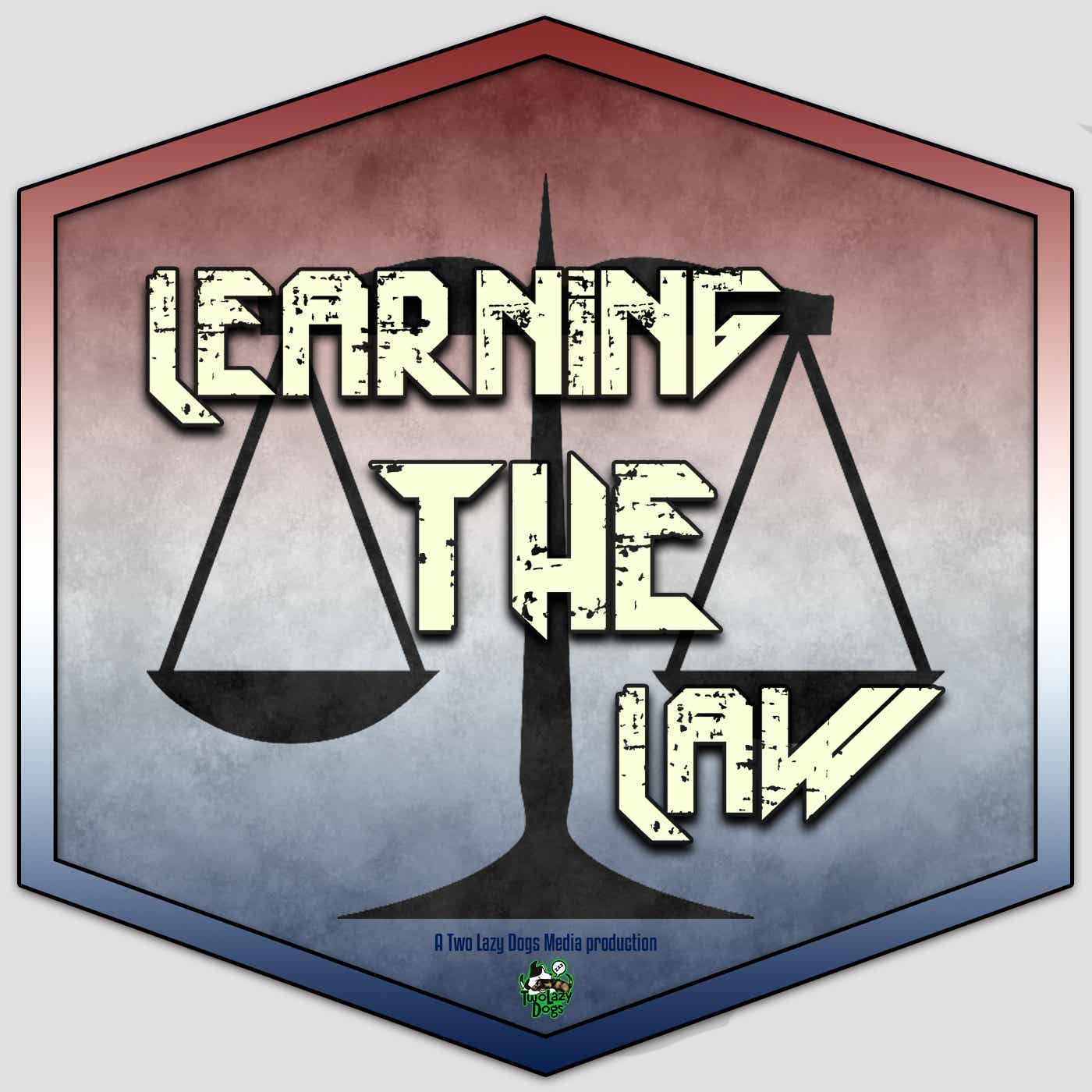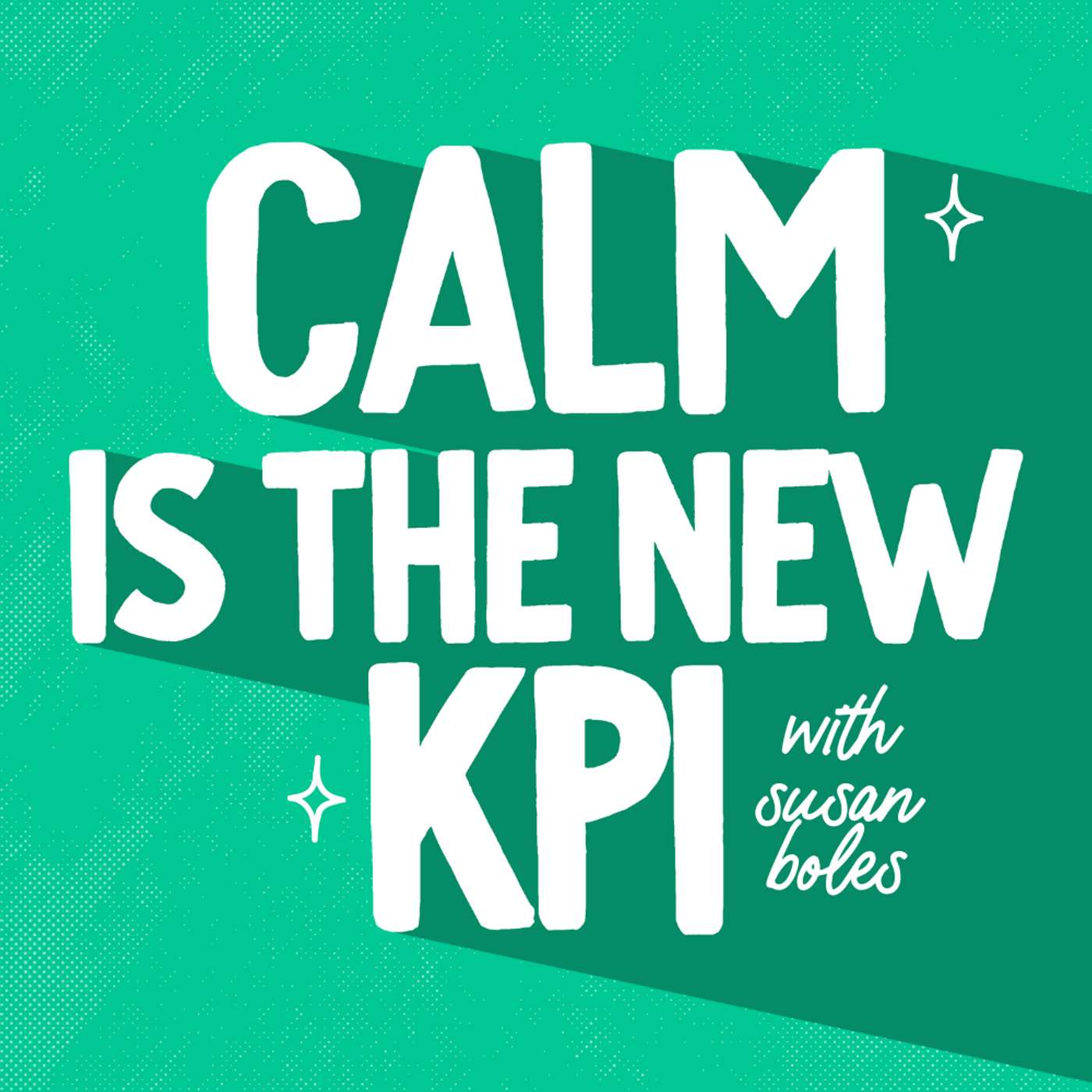
Podcasting Unlocked: Tips and Growth Podcast Strategies for Impact-Driven Entrepreneurs
Are you a purpose-driven business owner ready to make a real difference in the world? Join Alesia Galati, founder of Galati Media, as she shares actionable strategies to help you leverage the power of podcasting for positive change.
Alesia understands the unique challenges and opportunities marginalized voices face and is passionate about helping you amplify your message, grow your audience, and create a podcast that truly matters.
In each episode, you'll discover podcast growth strategies, impactful content creation ideas, authentic storytelling tips, marketing and audience growth tactics, and hear inspiring interviews.
Whether you're a seasoned podcaster or just starting out, Podcasting Unlocked will equip you with the tools and strategies to create a podcast that grows your business and contributes to a better world. Learn more about Alesia at helpmypod.com
Podcasting Unlocked: Tips and Growth Podcast Strategies for Impact-Driven Entrepreneurs
How to Make Your Podcast More Accessible with Meg Brunson
Accessibility is a big topic of conversation and an important one. As podcasters and business owners, our client and listener experiences should always be top of mind, but often we forget to include the needs of those that are differently abled or those who benefit from extra tools and accommodation. Meg Brunson is here today to guide us through a whole host of things we can do to make our podcasts and social media content more accessible across the board. This week, episode 104 of Listeners to Leads is about how to make your podcast more accessible!
Online marketing authority and former Facebook employee Meg Brunson combines her mission to build a more accessible and inclusive world, with her expertise in the digital marketing space. After a decade of working within the Deaf and disabled communities and years of watching her kids face racism and transphobia first-hand, Meg has seen how the way we communicate can isolate, divide and harm historically marginalized groups.
In this episode of Listeners to Leads, Meg Brunson sharing the importance of listening to diverse voices in podcasting and actionable steps you can take right now to make your podcast more accessible, one step at a time.
Meg and I also chat about the following:
- Mental health is more important than a podcast.
- Take baby steps to become a more accessible podcast - it doesn’t have to happen overnight.
- Stepping outside of yourself and considering how someone else is living.
- How proper emoji use increases a person’s likelihood of following your CTA.
Be sure to tune in to all the episodes to receive tons of practical tips on turning your podcast listeners into leads and to hear even more about the points outlined above. Thank you for listening! If you enjoyed this episode, take a screenshot of the episode to post in your stories and tag me! And don’t forget to follow, rate and review the podcast and tell me your key takeaways!
Learn more about Listeners to Leads at www.listenerstoleads.com
CONNECT WITH MEG BRUNSON:
CONNECT WITH ALESIA GALATI:
LINKS MENTIONED:
Your Mental Health Is More Important than a Podcast
The Truth About AI and Podcasting
Proud member of the Feminist Podcasters Collective.
So, first of all, there's two things I feel like we have to think about. Number one is this an audio only podcast, or is this a video and audio podcast? So when I started, i was audio only and with an audio only podcast. Transcriptions are the biggest piece of that. You want to make sure that you have transcriptions, and not only that, you want to make sure they're accurate. So there's a lot of transcription software out there, but unfortunately, we really need to take that extra step to review the transcriptions and make sure they make sense, because if they don't make sense, if they're not accurate, then it's not accessible, it's confusing, people aren't going to be able to understand it and people aren't going to be able to stick around. We have to think about equity and that everybody that accesses our content should have an equitable experience, so the person reading it should get the same information as the person listening to it. Again, little soapbox.
Speaker 2:Welcome to another episode of Listeners to Leads, where I'm helping podcasters launch and maintain a lead generating show. I'm your host, Alicia Galati, the CEO and head podcast strategist behind Galati Media, a full service podcast management company. On this show, you'll hear my guests and I discuss everything it takes to launch a successful podcast and keep it running. If you're ready to get leads, land speaking gigs and create deeper connections with your audience through your podcast, then this is the show for you. today on the podcast, we have Meg and you are going to love this conversation all things podcast accessibility and inclusion, making sure that not only are our podcast episodes accessible for those with disabilities or those that are not able to access our podcasts otherwise, as well as the podcast marketing being more accessible. She gives us straightforward tips, tricks, things that we can change and improve going forward, as well as simple step by steps that we can start today.
Speaker 2:You are going to love this conversation and let it challenge you. I definitely want to encourage you to take this to heart. Note that you don't have to make all of these changes Tomorrow. it is a simple moving forward, step by step to make your podcast more accessible, as well as your marketing. All right. join me in welcoming Meg to the podcast. Hello Meg, It is so wonderful to see you, And if you could just start by telling everyone who you are, what you do and about your podcast.
Speaker 1:Sure. So I am a mom, a full time RVer, which means we live in an RV. We travel the United States full time. Just some fun facts before we dive into the business stuff. I'm also a marketer.
Speaker 1:I didn't go to school for marketing, i went to school for criminal justice. But as life has it twists and turns And here I am in the marketing space, and knowing that background is important because I've always had an interest, a passion. I've always held a value in justice, you know, and growing up it was criminal justice. I thought that was going to be my path, and now I've applied justice to marketing. So my brand is called Just Marketing, justice and Justice, and it's focused on accessibility, inclusion and ethics in the marketing space, so we can market our business in a way that speaks to everybody, that includes everybody, that is accessible to everybody, that values people over profits. And that doesn't mean we're not going to profit Right, we're still going to profit, but it's from a people first approach. And so that's a little bit about what I do. I focus on social media. I also worked at Facebook in another life five, six years ago now And so my area of expertise is Facebook and Instagram marketing, and then with that justice layer to it. I love that so much.
Speaker 2:And I think it's such an important part of marketing as someone who does have a degree in marketing Like, i totally love that you do that and that you're taking that approach of adding that justice layer and really just finding what works best for you and how you can like bring all the parts and values of yourself into your business. I think that's such a wonderful thing. So you would put your podcast on pause for a bit If you could just tell everyone a bit about that. I know you're doing a bit of a rebrand with the new just marketing stuff, So tell us a little bit about your podcasting journey. Yeah Well, my first podcast was actually called familypreneur.
Speaker 1:I'm not making new episodes, but it is still out there. There's over 200 episodes and that was focused on blending family and entrepreneurship. So that's kind of the beginning of my entrepreneurial journey, trying to figure out how to balance, right And air quotes, family and entrepreneurship. Then last year I started to feel the desire for this change right, the desire to move from focusing on balance and marketing to focusing on just marketing, and so I launched the just marketing podcast in June of oh my gosh, 2022. I'm like, what year is it now? What year was it last year, june-ish of 2022. I launched the podcast and I launched with, i believe, 20-ish episodes and they were solo episodes that were very just educational, like foundational as to what just marketing is, considerations you should make in your just marketing journey. I have a just marketing checklist. that's a freebie and those initial podcast episodes basically supported that checklist. So as you go through the checklist, if you're like, oh shoot, what does this mean? It tells you which episode to listen to and then you can get more background information.
Speaker 1:I did welcome a couple of guests and then I had to take a pause. There was personal issues, mental health issues. I needed a break, holidays, all of that stuff. So it wasn't really a planned break. It was a break that had to happen. I believe that we just have to do what's best for us, even though that may not be what's best for like the podcast right. Like consistency is best, but I'm not going to be able to be consistent if I'm scattered. So I took a break and then this past week we launched and I've got solo shows and guest episodes planned out for the foreseeable future. So I'm hoping now to be back for good, consistently. I did a really good job with that, with family, for Noor And, like I said, it just had a hiccup. It just had a hiccup this time around.
Speaker 2:Yeah, i have an episode. We'll make sure we link it in the show notes. I did it with Lisa Zaratni. I want to say it was last spring and it was a bonus episode about how your mental health is more important than your podcast. And so often, especially with hustle culture, there's a lot of like go, go, go, keep going, be consistent, which is like yes, and let's yes, and it.
Speaker 2:That, if you get to a point where, like, you're burnt out or you just can't, then it's okay to put it on pause. It's okay to stop doing something if it is not serving you anymore or if you really can't and you have other things that are priorities. So I love that you were able to do that for yourself and really take space for yourself for that, and that you're bringing it back, which is like awesome. Great Love that, that whole aspect. So your business focuses on that justice side and inclusion and making sure that people can access things. Everyone can access things, that it doesn't matter whether they have disabilities or if they are part of marginalized groups, that they're able to access things. And obviously, as someone who is a person of color, that is a really important thing for me. That is something that I value in my business. So let's talk about podcasting and accessibility. How do we? let's just very basic level one why is it important? to understand the? accessibility is important. But then how do we actually do this podcast accessibility?
Speaker 1:Sure. So I love this question like why is accessibility important? Number one it's kind. It's just the kind thing to do. Why would you purposely exclude somebody from your conversation? We shouldn't be doing that. So it's just kind to make your content accessible. But second, it's a good business decision because it's a guaranteed way to increase your reach. So if you're creating content that's inaccessible, that means a portion of the community cannot access it. So by making it accessible, you're increasing your reach. Like with all of these like marketing gurus out there trying to sell you formulas to get more reach. This is like basic stuff that's actually guaranteed And just like when you think about it, it just common sense makes sense. So, yeah, so that's why accessibility is important.
Speaker 2:Yes, i love that so much. And knowing also, if you're someone who's like well, i want to know the numbers and I want to know the data. I don't know the exact numbers maybe you do But there is a significant percentage of the population that needs accessibility support And they have buying power. And so, if you're someone who's like well, what about the money? And like who? like? if I'm marginally, if I'm keeping them out, then what does it really matter? That's cash, money, dollars that you could be getting. That's a growth in your audience that you could be getting And very similar to the LGBTQ plus community. they stay with people who support them. They are putting their dollars. people who have accessibility issues. they're putting their dollars with people who support them. And so, even if you're someone who's like well, yes, okay, other people need accessibility help, but like, what's in it for me Like first of all, be a decent human being, like you said, but then also, these people do put their money and buying power into companies that support it. So I think that's so important.
Speaker 1:And I think we all do that right. Like I mean I can't be the only one Like there's certain businesses I always use Carl Jr as an example Like they have those like super bowl commercials with like half naked women eating burgers And I just I'm like I don't know, that's just not the type of marketing that I like, it's not what I want my kids to be exposed to. So like I'll be out and I'll want a Coke, like a fountain Coke. There'll be a Carl's Jr in the parking lot and I will drive out of my way to go to a McDonald's or Wendy's or something to get me that fountain beverage, because I just don't like supporting those businesses. And then, on the flip side, when there is a business that goes above and beyond and I'm gonna switch gears a lot I'm a huge Lizzo fan and I'm also a plus size woman.
Speaker 1:So Lizzo has like a clothing line now And like I love that clothing line And I will go there and look for something I need before I go somewhere else. So it's like and both sides of things you know what I mean Like if you make the right decisions, you're gonna attract those loyal customers And if you make the wrong decisions. You're gonna repel people kind of forever. There's a point right Where, even if you try to change your tune, the damage has already been done. So that's my little soapbox.
Speaker 2:Yeah, no, i think it's definitely important to remember, especially as business owners right, and podcasting, for the most part, is about building community around a topic, and so if you wanna build a community, then you have to include the people that that topic is interesting to, and it's not just people who look like you, it's not just people who have the same accessibility that you do. It's people who are disabled, it's people in marginalized groups, and podcasting can reach those people if done right. So how can we make our podcasts more accessible?
Speaker 1:So, first of all, there's two things I feel like we have to think about. Number one is this an audio only podcast Or is this a video and audio podcast? So when I started, i was audio only And with an audio only podcast. Transcriptions are the biggest piece of that. You wanna make sure that you have transcriptions, and not only that, you wanna make sure they're accurate. So there's a lot of transcription software out there, but unfortunately, we really need to take that extra step to review the transcriptions and make sure they make sense, because if they don't make sense, if they're not accurate, then it's not accessible, it's confusing, people aren't gonna be able to understand it and people aren't going to be able to stick around. We have to think about equity and that everybody that accesses our content should have an equitable experience, so the person reading it should get the same information as the person listening to it.
Speaker 1:Again, little soapbox I started, like I said, with the audio only And then I realized that by switching to a video podcast so recording video and audio, releasing the video on YouTube, releasing the audio on the podcast it would expand accessibility again. So people who are deaf or hard of hearing, they're not gonna listen, they're not gonna listen to the podcast. Let's just put that down. They may read the transcript. They may also prefer to watch to get those visual cues. Like when you're reading you can't understand tone or inflection, right, but if you're watching, you can see if I raise my eyebrow, you can see if I do my little air quotes. So having the video there provides additional accessibility.
Speaker 1:So that's why I decided to include video for my podcast. When you include video, that's when you need to also include captions. Now I use a program called Descript. I don't know if you're familiar with Descript, but it's like my favorite thing in the world now, my absolute favorite thing in the world. So that allows you to do the transcriptions and the captions all at once, so you only have to edit it through once. There's some really cool AI type tools that are affiliated with it that can help you with editing and things like that too. But it's really important that you have the video captioned, the audio transcribed and that everything is accurate.
Speaker 2:Yeah, i want to make sure that we note here, because some people might be listening and thinking I wanna be more accessible and this feels like a lot right, which is normal. That's completely normal to feel that way and there's nothing wrong with feeling that way, and so if you're feeling like this, take some time, talk to your audience. If there's someone in there who is like, hey, i would love a transcript, then awesome. You can say here I will make sure it might not be up on the day. If you're someone who's maybe doing your podcast by yourself, it might not be up on the day of, but let me run through an AI version real quick and make sure that it's accurate for you And I'll have that up by maybe the next Monday or whatever. So that way you're still able to provide something that is valuable to your audience without feeling like, wait, i didn't wanna have a video podcast. Now you're telling me I have to have a video podcast too. Like, don't get overwhelmed, take a breath, it's okay.
Speaker 2:But if you have been asked especially most people who are hard of hearing or really want to be able to listen to your podcast because they're like, ooh, that content sounds great, they'll ask you for a transcript if they really want to. But if you can provide even just the simple transcript, then that is a step above. So real quick. Just wanna make sure we note that that if you're feeling like Meg Alicia, you're giving me a lot to do here. This feels like a lot. Take a breath, it's okay. There are ways that we can be accessible in bite-sized pieces and still move forward and take action.
Speaker 1:That's what I tell people all the time, too, is baby steps. So I mentioned before, i have a checklist. The checklist is robust. It is a robust checklist and it's easy to look at it and be like, oh my God, i can't do this. I can't. No, no, no. Pick one thing, do one thing, do it for one to three months, however long it takes you to master it and feel like it's now a part of your process, and then go back and add something else. So that's. I'm glad you brought that up, because I'm not telling everybody to do all these things tomorrow, but have them on your radar.
Speaker 2:Yes, as ways that you can improve. I mean we talk about this too in podcasting in general like there are so many strategies out there to try. There are so many different ways that you can promote your show, talk about your show, improve your show, and I'll give you a lot of those. But take one, try it out, see if it's gonna work for you, see if your brain even works that way. If you're like, wait, i kind of need to run it through this different transcription service, or maybe I wanna use Descript, try different ones, see which ones work best for you, see which one works best in your workflow that you have created already and then move forward from there.
Speaker 2:So important, descript is a fantastic service I have. I wanna say when I first started my podcast management company, we were looking at them as potential for editing and things like that, and I found that with the quality of editing that we do for our clients, having the two voices just the way that they had their system, it just wasn't gonna work for us, but I do know that for solopreneurs it is a fantastic way to get it done for sure. So if you're wondering, if you're curious in my opinion of Descript, please check it out If you're someone who's DIYing your podcast, because it really is a great service, all right. Anything else on the podcast accessibility side that we should talk about?
Speaker 1:I feel like accessibility. Those are the big things. If we wanna talk about inclusion, i think that's another piece of the puzzle and I don't know if you wanna go there. So if you don't wanna go there, we can just remove that.
Speaker 2:No, let's go there Because I think this is such an important topic, especially as a woman of color. this is really important to me. And as a lighter, privileged woman of color, this is especially important to me because I know that I have lighter privilege in that I have a lighter skin tone, so in some cases I can be white passing though I am a little too dark, i think, to be white passing, but I tend to be invited to spaces as the token mixed person or the token person of color. And this is such an important way, especially with podcasting, they don't even have to see the person Like if it's just an audio only podcast. Have people of color on, increase the voices and the way that you can amplify the voices of people of color. So, yes, i'll get off my soapbox, go ahead.
Speaker 1:You're good. You're good. I love when it's a two-way conversation. It's not just me regurgitating information, like I love that it's a two-way conversation. So, like you said, being able to bring in people that don't look like you And I'll be honest, when I first started I took a look back at like my first 12 guests and they looked a lot like me, a lot of white people. I'm not saying there was only white people, but it was a majority of white people And it's like you realize that you want to increase that diversity but you don't want to do what you just alluded to and just have that token black person, that one, so you can say that you're diverse and check the box. That's not what we're trying to do. We're not trying to check a box. What I also noticed is that the podcasts that I listened to were primarily people who were white as well. So that's partially an Apple problem, in my opinion, an Apple podcast problem, because as I went and looked, you know you look at your listening to and at the bottom it's like recommended podcasts And they were all white people. Like I had to really go out of my way to search And you know they're out there. It's not just white people talking about marketing. So I had to go out there and search for black podcasters just to listen to.
Speaker 1:I'm not talking about pitching to be on their show. I'm not talking about requesting that they be on my show. Those are like later steps. The first step was just to start to listen to voices that are different from yours And then from there, just like with any like relationship, once you start listening to people, you'll start to think of ways that they could serve your audience And then you can invite them on to your show that way. That's how I would have that relationship go.
Speaker 1:I would not pitch to be on their show, because the goal here is to diversify your show And to offer a diverse range of opinions and outlooks and experiences and expertise to your audience. I believe diversity strengthens everything. That's something I say all the time, and so I value learning from a diverse pool of people. But it has to be a very intentional thing, because the way the world and I'm using the world as like a big air quotes, right, apple podcasts or however you want to define the world works. It seems to feed you resources that are similar to you and not those diverse resources. So you actually have to do some of that work to find those people.
Speaker 2:And that can feel overwhelming at first Because you're like wait, well, where in the world am I supposed to find these people? But, like Meg said, there are tons of places and ways that you can go about searching for them. Maybe I should just do an episode on this, because I feel like this is like here are some ways to find more diverse podcasts. Like there are lists on lists out there And I feel like someone's compiled them somewhere. Even if you look at the Women of Color Podcasts community, there's so many different ways to find these people, so definitely need to add in links for that. So we'll make sure that we have links in the show notes, if someone's like. Well, where can I find these people?
Speaker 1:The same way. I talked about Apple podcasts only referring me to, like other white listeners. Once I started finding the podcasts that were people of color talking about marketing, because that's what I like to listen to, let's just be honest Then Apple started referring other people of color. It's really a shame to admit or to face the fact that a lot of the technologies that we use are I don't know if I should say racist in that way, but it feels racist, right That they're showing they know. How do they know? Are they looking at the podcast cover art and using that? I don't know, i don't know what the answer is there. That's a completely other tangent that we probably don't want to go down right now. But what I'm saying is, once I started finding a few, then Apple did start to refer me to more, recommend more.
Speaker 2:That is good to note. By the time this episode goes live, i will have recorded this episode, but I have a episode will make sure we link it in the show notes about podcasting and AI, and there's a lot to talk about AI recently and I don't think that people really understand that AI is based off of voices of Mostly white people and that it is already creates an added bias within podcasting. So if you're using AI to try to Make your podcast better, do whatever AI wants things you want to try, like noting that if you want to be more inclusive, have more inclusive guests, then it might be worth looking at other options as well, because a lot of the AI that is out now And the time of this recording is March 2023 Let's hope that it's better in the future, but a lot of it is skewed. Yeah, such a good point. All right, love that.
Speaker 2:Finding more podcasts, listening to more people of color, making sure that we are listening to marginalized groups, learning from marginalized groups, inviting them to be voices and experts on our shows as well. Now Let's talk marketing, since that is where you focus Marketing your show. How can we be more accessible in our social media marketing?
Speaker 1:more specifically, So the number one tip that again is going to sound like a lot of work, so just be prepared, take a deep breath, it's gonna be okay is Making sure that all of your promotions include alt text. So alt text is Basically a written description of what an image looks like. This is Important not only on social media, but for your website and for your emails. Again, a whole nother tangent. We could go down that we're not going down today, but basically what it means is if somebody's using a screen reader So somebody who is blind or has a visual impairment uses a screen reader to read what is being said, what it gets to an image. Alt text is how the screen reader reads what that image is. It's also. It also helps people like me who sometimes have weak internet connections and images don't load. If the image doesn't load, the alt text will display so that you can read what the image is.
Speaker 1:Now many social media platforms have a built-in like AI version to try to guess what the image is, and it is hugely Inaccurate and should not be relied on. I use an example all the time. It's me and my two kids that are standing together for a photo and Facebook said maybe two people smiling. Maybe it may be, or it was three people. You know what I mean. Like it was completely inaccurate. And if you're sharing a image on social media, people probably know who you are right, like whether it's your personal page or your business page. So when I put the alt text for this, i wrote Meg stands Smiling at the camera with her two oldest daughters. Whatever, do you know what I mean? Like spell out what that image is, use your name, use names of people who your audience may know, or Spell out who the people in that image are. There's typically, i know, on LinkedIn There's a text limit. I want to say it's 130 characters, so think of it like tweet size is about how much you should be writing for alt text and Describe what's relevant. So another example I use is if I have a picture of me and my kid and there's a photo bomber in the background, if the purpose of this picture is to talk about me and my kid and what we're doing, then I don't mention the photo bomber because it's not relevant. Now, if the purpose of this photo is that this photo bomber is hilarious, then I'm going to mention the photo bomber, right? So look at the image. Look at your post, think about the intent, think about what you're trying to convey to your audience with this image, and that's what your alt text should be.
Speaker 1:You also want to make sure with Podcasters we're guilty of this, making images that have a lot of text on them, like a quote. You know, you pull a quote that your guests said In your episode and you put that on the image. That entire quote, the entirety of that quote Needs to either be in the alt text or you can put it in the caption So that if a person using a screen reader is trying to access your content, they can read the entire quote. It's what they call flattened text. So, in like the marketing world and the accessibility world, it's called flattened text because that text has been flattened, squished into the image and screen readers can't read it. So we need to put it somewhere where it's not quote-unquote flattened.
Speaker 2:Yes. So I see this Really often in the. I'm part of the like bookstore community. I read a lot of books, which my listeners know I really like 250 books a year. It's a lot of books. Part of the books to Graham community. I see this a lot and so there's two examples that come to mind.
Speaker 2:One woman that I know does this really well. I actually pulled up, as you were talking, i pulled up one of her pictures and it's the first picture is of Her kind of like leaning and she's holding Talia Hibbert's. I don't even know if I said the author's last name correctly, so I apologize. She's not listening to the show. Take a hint. Danny Brown is the book and in the bottom She has like an ID. Like this is what the image is. I know she does this as well as in the alt text, where she will actually put it in the caption of like This is the image shown as well, and she wrote Amanda, a brown, biracial, plus-sized woman Cosplay's as Danny Brown short curly hair, is colored bright pink, wearing all black and holding a paperback copy of the bright yellow book and sitting against a pale purple wall and white door. So like she goes to like the extreme of like this is every. This is what's in that photo And I really love that.
Speaker 2:And another thing that I've seen is like being part of the books to Graham community. I actually created a post Yesterday on my books to Graham. You don't need to know what it is, but this is relevant Where I'm like hey, these are like age gap romances, but they're age gap romances where the woman is older and in there I had a books shown and Then a list out of all the books that were in the carousel post. Make it super easy for like, what makes saying like, make it easy for people to figure out What is in that post without making it like it doesn't have to be as complicated as or me, maybe even as much information as My friend Amanda has on there. But, like Meg said, what is important, what is the point? and then make sure that that's in there.
Speaker 1:So I love that so much and part of the reason that listing the colors like your friend did is so important is because Some people who are blind or visually impaired can still see Something like. They can still see shapes, colors, etc. So by laying all that out, i think you mentioned like pink hair. So if they see a pink spot they know that's the hair and then they can kind of piece The rest of the image together and really get a deeper understanding of what the images is showing.
Speaker 2:No, i love that. I wouldn't even have considered adding in like things like color in my mind, because I'm I can see, right, and so I feel like a Lot of this and what we're talking about. You have to step outside of yourself, right, and how you perceive the world, and how you see things, hear things, feel things, taste, touch things, because not everyone can Do all of those things and you really have to take into consideration what kind of life someone else is living as they're trying to live in this fast-paced media first world.
Speaker 1:I'm glad you brought that up, because it's not only people who are permanently disabled, but people just any person can at any time get pink eye or an iron section, and now your site is limited. So I mean it's like, yes, we wanna help the disabled community as well, but we all have the risk of facing some of those issues and needing to rely on accommodations, you know, at any given time.
Speaker 2:Yes, it's the same as like the buildings that have the ramp and the ones that don't. Or even to go to. Like the very simplest thing, i went to a restaurant and my youngest was still in diapers and they had no changing table in the woman's bathroom, in the men's bathroom, outside of the bathroom, nowhere. And I'm like you say you're a family-friendly restaurant. On your social media and like on Google, it says family-friendly, but there's no changing. Like I have to put my jacket on the ground to change my child, like simple accessibility, like just thinking about those things I think is so important, all right, so what else can we do on the social media side? We've talked to alt-tex. What are some other things?
Speaker 1:So something fun to talk about is when we're writing hashtags, URLs, user names. You know, we're in this digital world where we smush words together and make these compound words, and it's important that we use what's called camel case. So when you think of a camel, you think of the two little humps of the camel and you wanna make sure you capitalize the first letter of every one of those words. There's some really funny examples of ways that things can go wrong. Is this a podcast that I can like? cuss on?
Speaker 2:You can, we'll make it explicit, it's fine.
Speaker 1:Okay, i mean, i don't even know if this is considered a cuss word, but the hashtag is W-H-O-R-E-M-E-M-B-E-R-S and people read whore members, w-h-o-r-e, whore members, and it's like what kind of a club do you belong to, right? I don't know, but if you use camel case, it's actually supposed to be who remembers? like who remembers looking back. There are other examples. That is just one that I see come up from time to time. I just got served one and I'm not gonna be able to remember off the top of my head, but it was like a car dealership based out of Italy or something, and the way that the candle read was just inappropriate and not inherently right. If they had used the capitalization, it would have totally read differently. And so, number one, it helps with clarity, not just for people with disabilities, but just for all of us, because I don't know if you've ever seen like really long hashtags and you're like what the heck? And so you're just trying to figure it out. So by using camel case, it makes it easier, but it also does help with screen readers and things like that. So that's another example that's fairly easy to do. I know for me, i use the scheduling tool for a lot of my Instagram posts And so I just took 10 minutes and went in and camel cased all my hashtags. So now they're all camel cased already. I don't have to like type them in, because Instagram does make it difficult. They default to all lowercase letters. So that's another thing.
Speaker 1:One more thing I'll mention which, again, don't get overwhelmed in just mentioning things is we talked a little bit about color and knowing the color contrast and whether your brand colors have enough contrast so that people can read them, especially people with color blindness. So when you think of, like, black on white, that's very clear, right. But then when you think of black text on what's to say, a blue background, suddenly the contrast isn't as dramatic. And there's a line on here. I think it's one to 4.5 is the ratio, and you're probably thinking what the heck Like? how am I supposed to know? there are tools. I'm happy to give you the URL. It's in my just marketing checklist, but I'm happy to give you that URL too, where you can go in and you can put in your brand colors, like your background color and your text color, and it'll tell you does it pass the test, is it good enough? And I'll tell you.
Speaker 1:When I did it. One of my colors, my light purple, wasn't as light as I thought it was, so if I used my light purple background with my darker pink and purple text, it failed, which means that people who have color blindness or visual impairments, or even just normal-sided people, may have trouble reading because the contrast isn't significant enough. I think we can all think of a time where we tried to read something and we were like it's so hard to read because the text and background are both dark or both light or whatever the case may be. So, using that color contrast tool, i actually just adjusted my branding colors. I don't think anybody noticed. It wasn't like a major rebrand. I didn't go back and change my past 18 months worth of content, but going forward, i changed things so that it was more equitable and easier to read, and that's something that I think a lot of people I had never thought of.
Speaker 2:No, and I think that's definitely something that we can all relate, but I don't know how old my audience is. Well, i do. I know how old my audience is, so you guys will know what I'm talking about. What do they say?
Speaker 2:The gold or blue dress, just that, like thinking about how the world got divided over whether the dress was blue or the dress was gold. And I remember looking at it my husband has a slight color blindness with his greens and his blues get weird And I told him like hey, what is this dress? And he said something different than what I saw completely. And I'm just like we're looking at the same thing, like it's right there on my screen And so it is so important And it's not something that we think about because we think, oh, i can see it, it's fine. But to your point, we'll make sure that we link that in the show notes of that website that we can kind of run our stuff through and see Do we need to just make a little tweak moving forward to ensure that people can see? I mean, you want people to see your message. If you have something incredible to say, you want your audience to be able to see it, and this is very easy ways to do that.
Speaker 1:And the checker is really cool too, because if you I mean even if you don't fail if you pass or fail you can put in your hex code It'll tell you if you pass or fail, and then you can actually like change the color with a slider. So when I failed I just took the slider and kind of moved it until it passed. So I literally just lightened it a little bit And then I just updated my branding in Canva And I was good to go.
Speaker 2:Oh, I love that And that's great. I love quick and easy ways to like. All right, I have a problem. Help me fix it. So that's so wonderful. Let's talk emoji use as well, Because I know that's one of your last points on this Before we're wrapping up. Guys, it's fine, It's going to go a little longer, It's OK.
Speaker 1:I'm a talker.
Speaker 2:It's OK, same same, same. So emoji use on social media, i know especially adding in like the different colors of the different emojis now and all that stuff. So tell me everything I need to know about this. Oh, boys.
Speaker 1:I feel like we could have a whole episode just on emojis. So I'm going to go as quick as I can Not as quick as I can, but make it as concise as possible. Number one fewer is better. So when we're talking about screen readers, again, every time an emoji comes up, the screen reader reads the emoji, and so if you have a line of like five emojis, people are going to be like, okay, lady, and then they're going to bounce off. They're not going to continue reading your content. So fewer is better. Use them strategically. A couple emojis is fine.
Speaker 1:When researchers like pulled people who use screen readers, they said they don't mind occasional emojis, but if it's excessive they'll stop reading. So I've reduced my emoji use. I do not use emojis for bullet points anymore. It's cute, but it's not accessible. It's not a good user experience. The other interesting thing you know the default skin tone for emojis is yellow and then, like Simpson, yellow right, and then they have the different skin tones. If you use a skin tone emoji, it actually adds additional alt text to the emoji. So where a thumbs up with the yellow would be, you know, thumbs up emoji I don't know if that's the actual thing it would read. But let's just pretend. If you used the skin tone, maybe you use skin tone number three thumbs up emoji. Skin tone number four thumbs up emoji. Because you know, sometimes people will use multiple skin tones and it's going to read each one of those?
Speaker 1:How long are you going to listen? if you have to listen to? skin tone number one thumbs up emoji. Skin tone number two thumbs up emoji. Like by skin tone number three thumbs up emoji. I'm done, yes, i'm done.
Speaker 1:So I, for a long time, i thought that I should use the skin tone that most accurately represented me, but I've changed my opinion on that and I use yellow now because I believe it to be a more equitable experience. So that's, you have to make your own decisions. Right, you have to make your own decisions, and that's one of the things we have to do every time and you're trying to hit social media is we have to look at it and be like this is really cool, i want to be with one of the cool kids. However, is it inaccessible for people? And in this case, my belief is that we should just be using the yellow emojis and that we should limit it to three, three, maybe five per post.
Speaker 1:And the other thing is, if you're marketing, you likely have a call to action in your post and you want the emojis to be after the call to action, to give people the greatest chance of reading through the call to action. So, instead of doing like a finger pointing at the URL this way, click the link here finger pointing emoji URL. Instead of doing that, do click the link here, the link finger pointing to the left, Like. Do the emoji after the call to action so that people have the greatest chance of reading through the call to action if they're using a screen reader or a assistive technology.
Speaker 2:Oh, that's such a great tip. I love that And I love what you said And I think that's such a great thing to end on is like, as new things come up, as more things are brought to our awareness, you can make those changes. You can decide if something is the right move for you, making sure that you do take time to consider the reasons, right. And so what are the reasons that maybe you are hesitant to add more accessibility? Is it because you don't feel like you have to or you don't want to? So often, when we're faced with change and faced with a way to be more inclusive, we, as humans, tend to revert back to well, i don't need it. And so I really want to challenge you guys that, if there is one thing that you can take from this, to actually take time and consider the things that Meg has brought to us and see how you can make your business, your podcast, more accessible. Meg, this has been so good. How can everybody find you, hang out with you, get to know you and listen to your podcast?
Speaker 1:Yeah, so Just Marketing is available on all the podcast channels. Wherever you're listening to this podcast, you should be able to find Just Marketing. My website is megbronsoncom. The Just Marketing checklist is at justmarketingchecklistcom, and my favorite place to hang out right now is Instagram. I'm kind of in love with Instagram reels, and so I am at the megbronson on.
Speaker 2:Instagram And we'll make sure that we have links for all of that in the show notes. Meg, thank you so much. Thank you.
Podcasts we love
Check out these other fine podcasts recommended by us, not an algorithm.
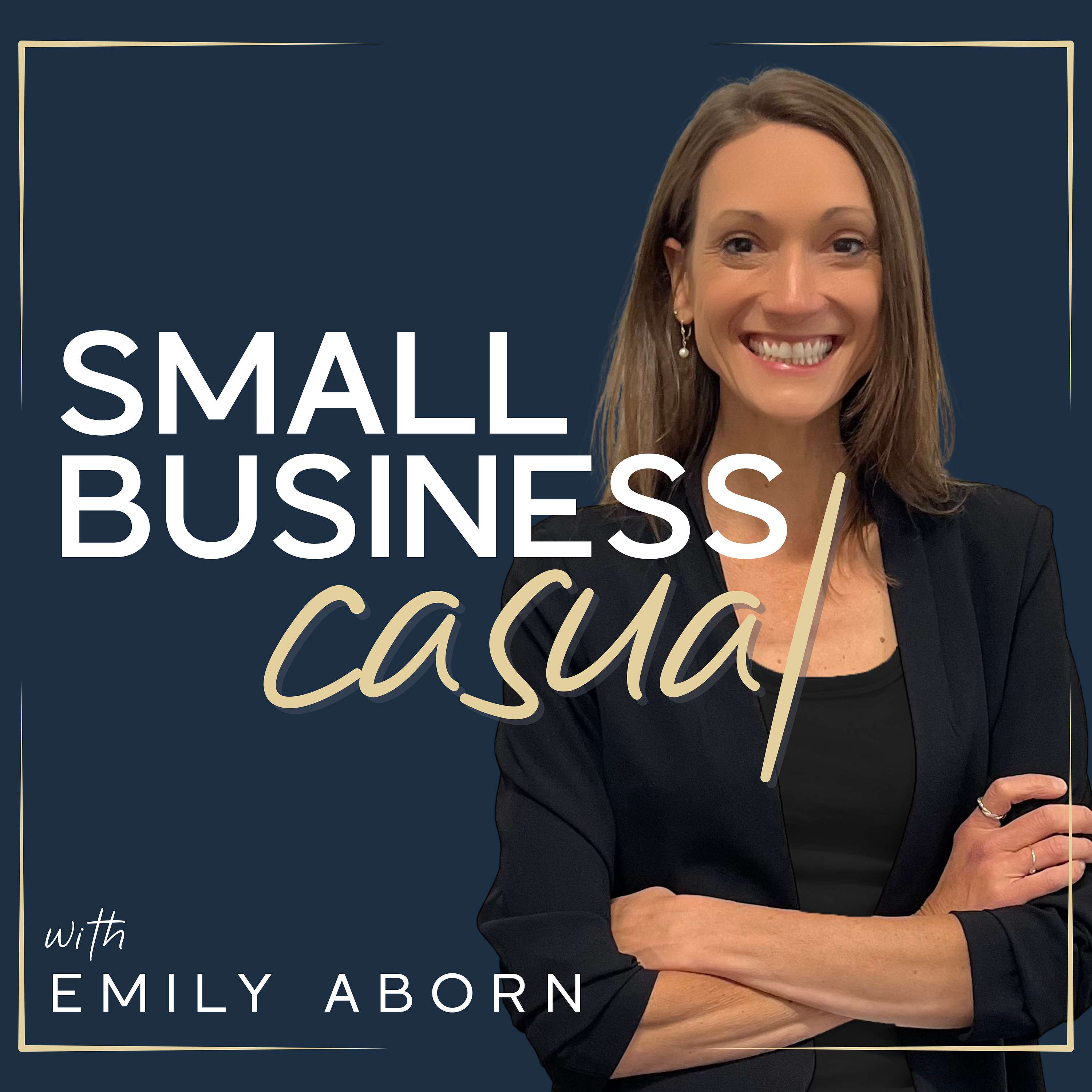
Small Business Casual
Emily Aborn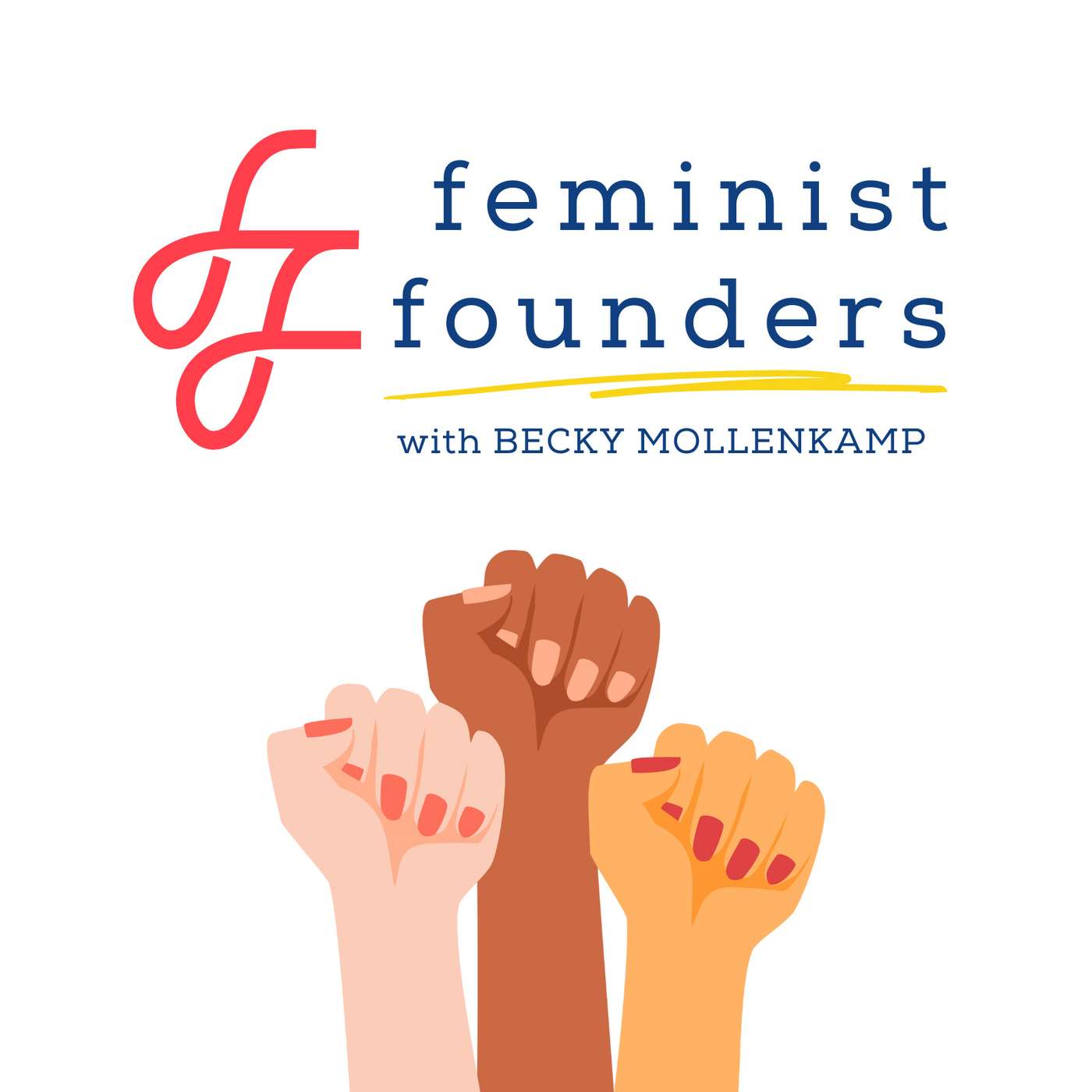
Feminist Founders: Building Profitable People-First Businesses
Becky Mollenkamp
Nonprofit Mission: Impact
Carol Hamilton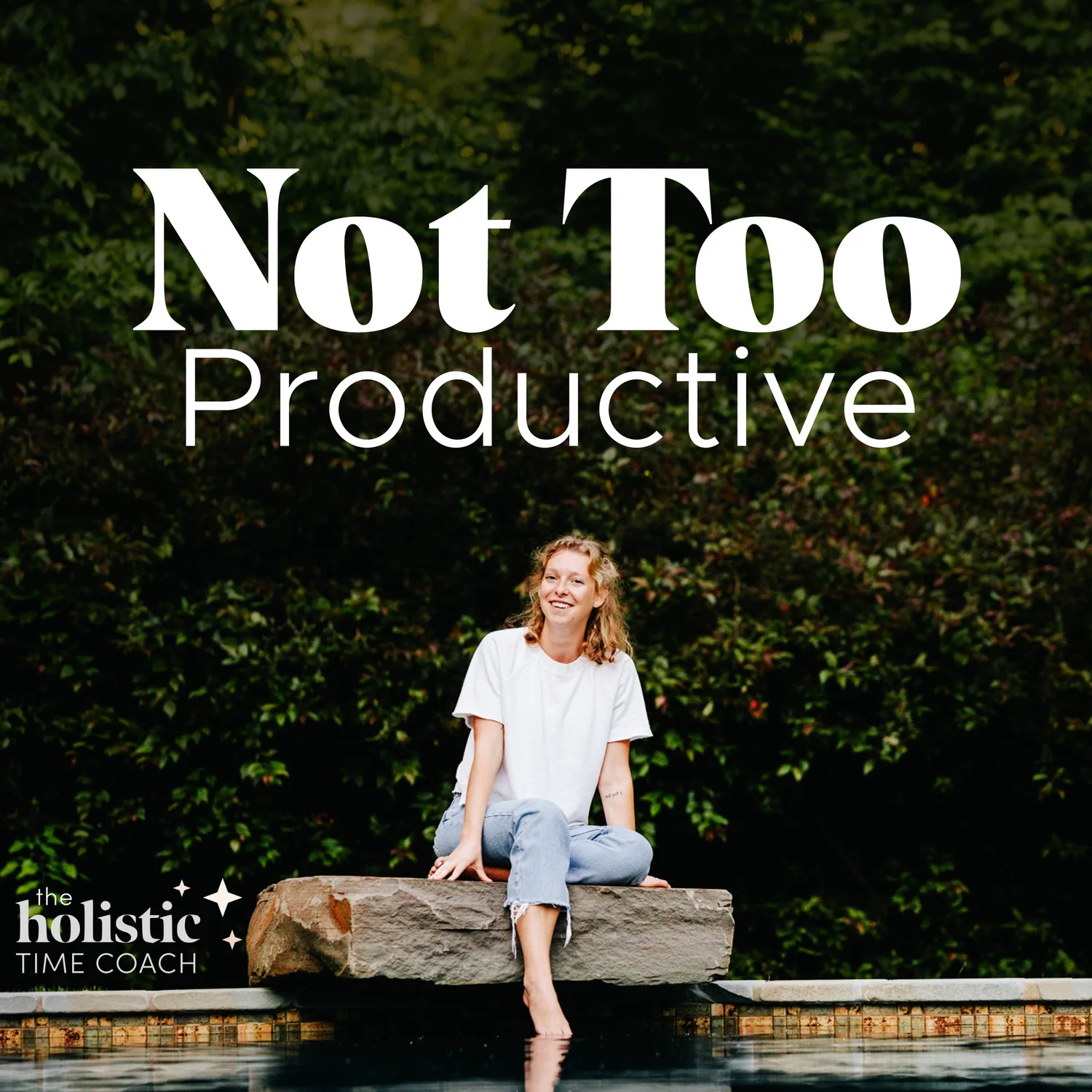
Not Too Productive
Becca Rich
Small But Mighty Agency: Win clients and build better networks for marketing and consulting agencies
Audrey Joy Kwan | Agency Growth Strategist
Scenic Route, Social Change and Mental Health for Tired Minds
Jennifer Walter
Mindset Unlimited: Tips, Tools, and Inspiration for Women in a Time of Change
Valerie Friedlander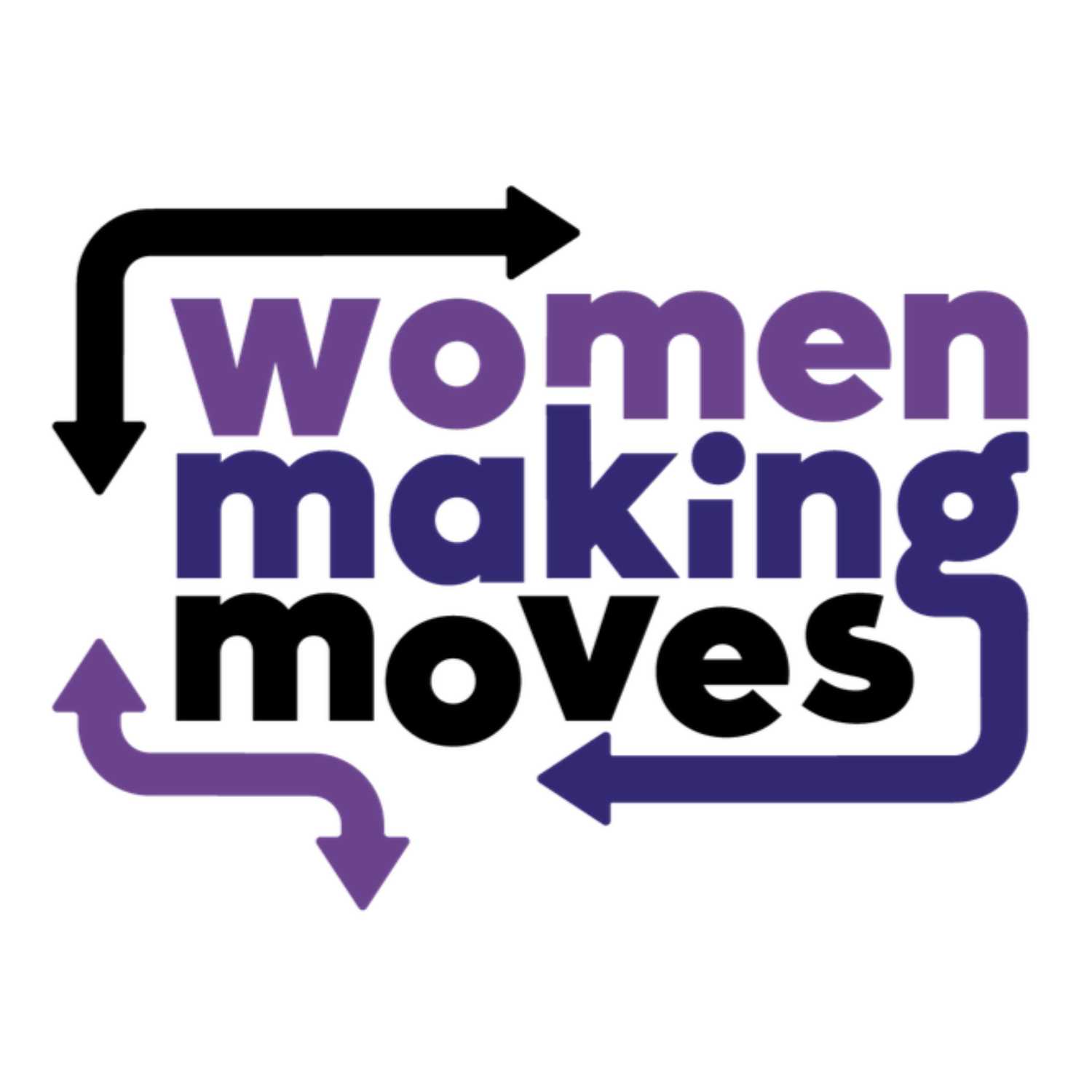
Women Making Moves
Amy Pons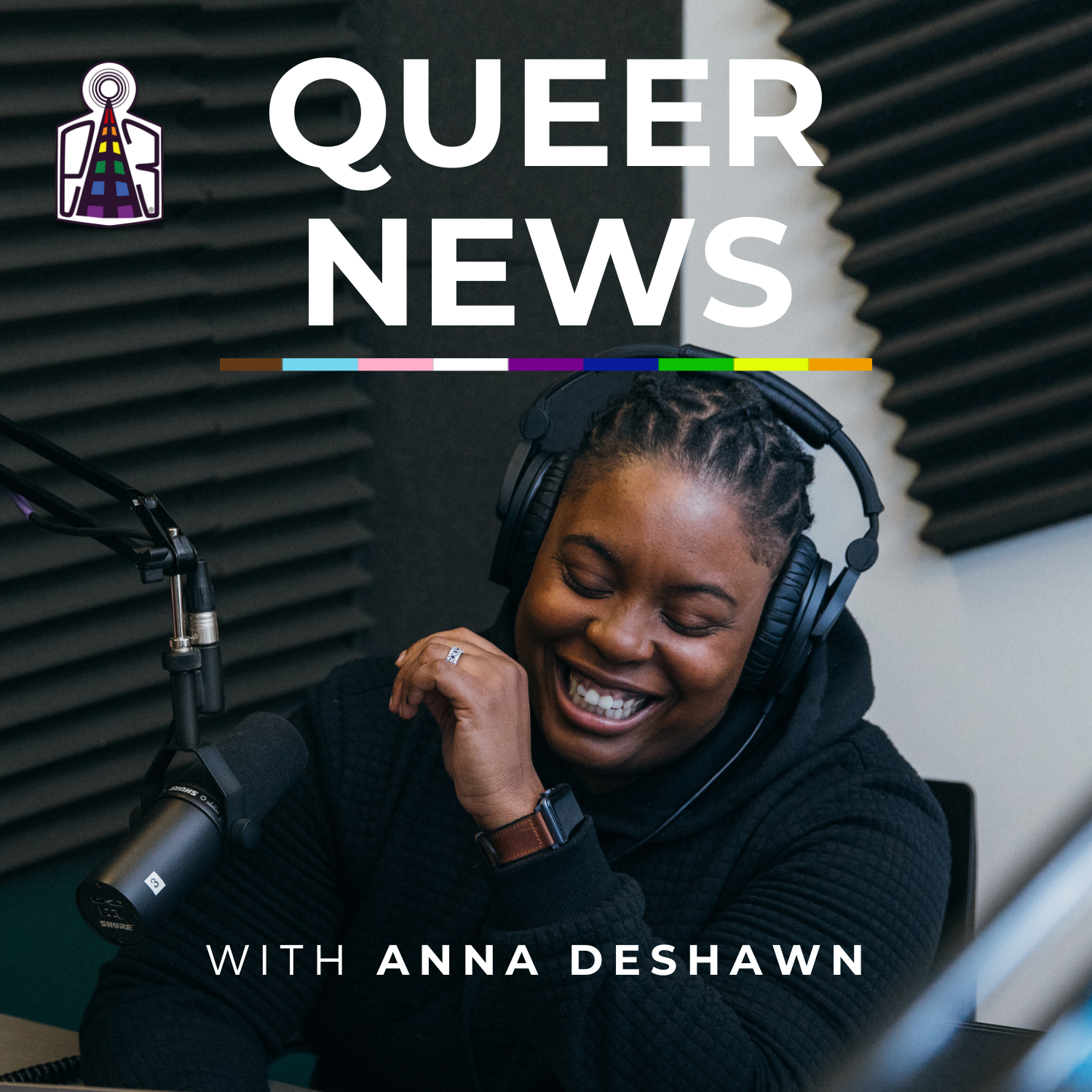
Queer News
E3 Radio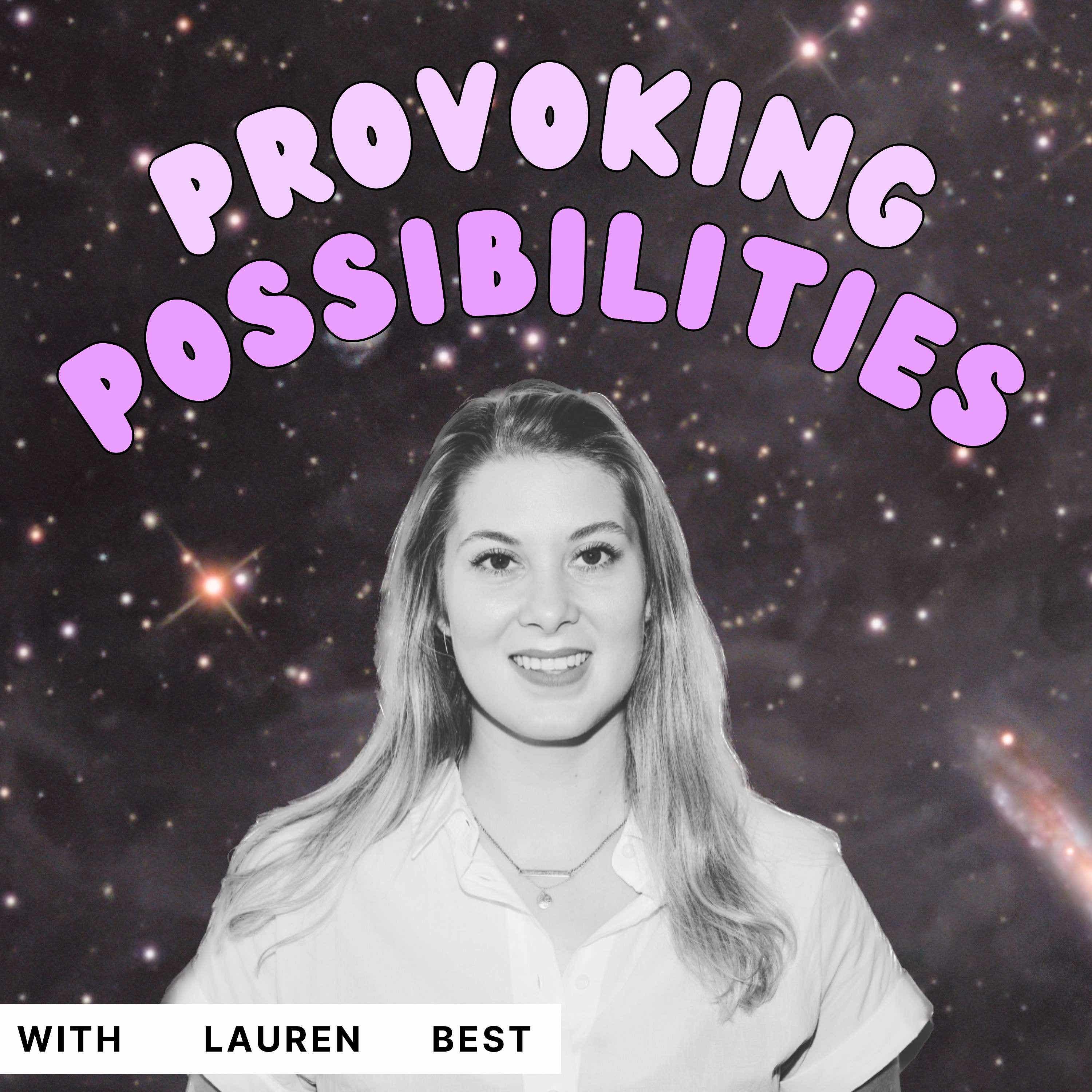
Provoking Possibilities
Lauren Best
Powerful Women Rising - A Business Podcast for Female Entrepreneurs
Melissa Snow - Powerful Women Rising, LLC
Careers at the End of the World: Reimagining Ambition, Work, and Your Job Search in Unprecedented Times
Jenn Walker Wall | Work Wonders Careers
Reframeables
Rebecca & Natalie Davey
Humaning: The Shit We Need to Talk About
Steff Gallante
Disrupt Your Money
Meg K. Wheeler
The Air We Breathe: Finding Well-Being That Works for You
Heather Sayers Lehman, MS, NBC-HWC, NASM-CPT, CSCS, CIEC, CWP
Fox Talks Business Podcast
Tanya Fox
The B H.O.T. Podcast
Brandon Edwards
The RestLab with Jordan Maney
Jordan A. Maney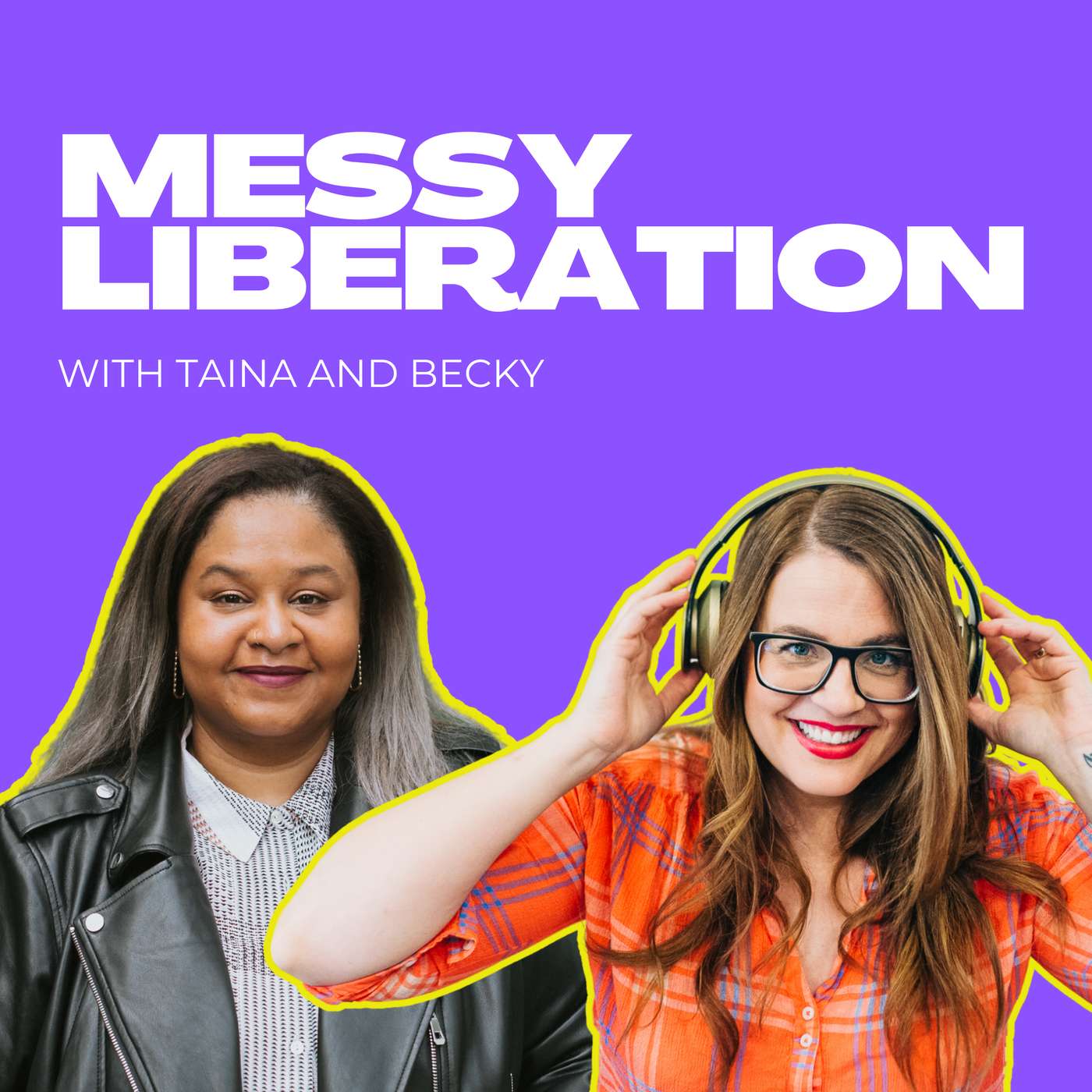
Messy Liberation: Feminist Conversations about Politics and Pop Culture
Becky Mollenkamp and Taina Brown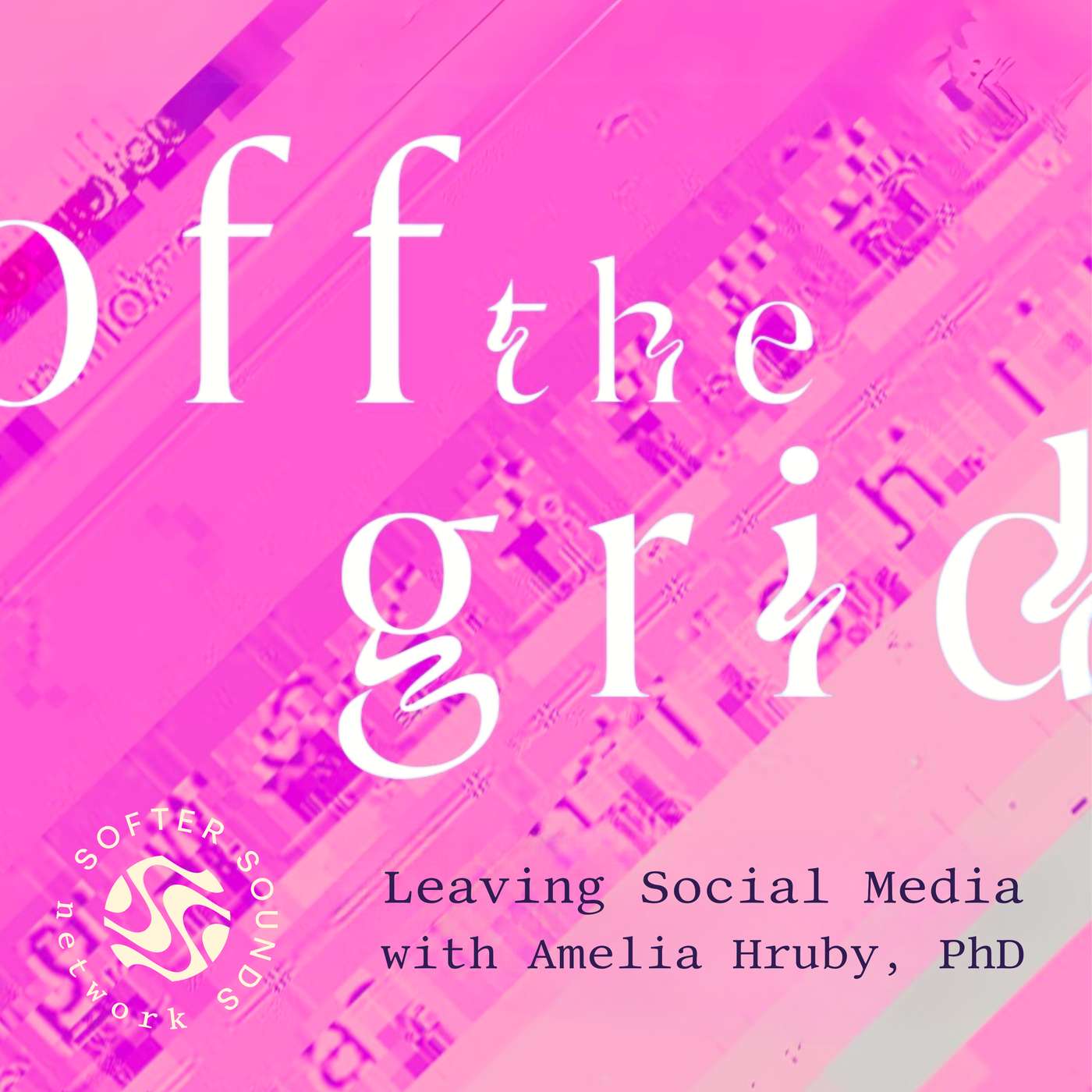
Off The Grid: Leaving Social Media
Softer Sounds
The Passionistas Project Podcast
Pop Culture Passionistas